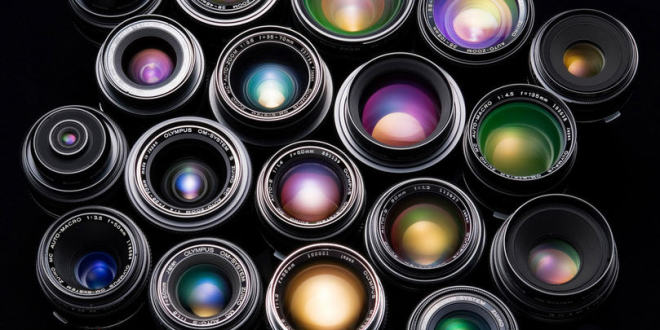Understanding the different types of camera lenses is important when it comes to deciding what type of lens is right for you. Photographers use different lenses depending on the conditions, the setting, and what kind of effect they are aiming for in the shot. There are many different circumstances that impact the choice in lenses of a photographer like the lighting and the subject of the shot. Here is a list explaining the different types on lenses and their pros and cons.
Wide-Angle Lens
Wide-angle lenses are popular with landscape photographs. Wide-angle lenses have a wider scope than the human eye so it can include the entire landscape. A wide-angle lens can also focus on both the foreground and the background at the same time, which is another benefit that the human eye cannot duplicate. Wide-angle lenses are perfect for large landscape photos that aim to capture both the foreground and the background. A wide-angle lens is not so good for capturing small details of a single object.
Zoom Lens
Zoom lenses have the ability to widen and shorten the focal length in turn increasing and decreasing the level of magnification of a subject. Zoom lenses are very popular for a wide variety of photography types because of this feature. The drawback is that zoom lenses have a small aperture; therefore they are not good for taking low light photos. Zoom lenses are very common and are found in most camera models. There are two different types of zoom lenses. An optical zoom lens works by magnifying the image. Digital zoom lenses crop the image once the maximum zoom has already been reached. This causes a lower resolution, resulting in a lower quality photograph.
Telephoto Lens
A telephoto lens is much like a zoom lens. Where a zoom lens magnifies the image, the telephoto lens reduces the distance between the lens of the camera and the photograph’s subjects. A telephoto lens can show much greater detail than the eye can see at an equal distance.
Fixed-Focal Length Camera Lens
Fixed-focal length lenses are not adjustable lenses that are typically used with lower to middle quality cameras. These lenses can sometimes double as wide-angle lenses as well. This lens works great for photos with low lighting.
Fixed-focal length lenses are great for beginners that are just learning photography. The camera lacks zoom ability, leaving the photographer to be more creative to produce quality shots.
Fixed focal length lenses are becoming less and less common as most cameras these days have zoom lenses built in.
The Macro Lens
Macro lenses feature a short focal length to allow extreme close up pictures without distorting the photo. Digital cameras typically feature a macro setting that has the same effect as original macro lenses. This lens produces photos that make the subject appear larger than they really are. Macro lenses work amazingly to magnify very small objects with detail.
Fisheye Lens
The fisheye lens creates distorted images with a curved shaped look. A shot from this lens resembles what you would see looking through the peephole of a door. This lens was first created as means to capture large areas of sky in astronomy photographs. The fisheye lens is now used more often in landscape photos to show the curve of the earth.
 Mind Gem
Mind Gem

